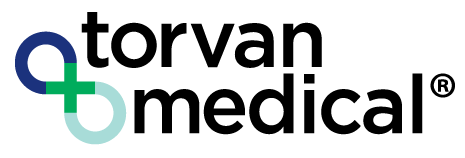Introduction
Hospital waste management is an essential, yet often overlooked, pillar of effective healthcare delivery. Hospitals in the U.S. generate more than 29 pounds of waste per bed per day1, illustrating the scale of the challenge. Managing this volume, particularly regulated medical waste, places substantial operational, environmental, and financial burden on healthcare institutions. Without well-designed systems, this volume poses serious risks to patients, staff, and the environment.
Effective waste management is far more than routine housekeeping, it encompasses infection control, regulatory compliance, cost containment, and environmental sustainability. Hospitals must now balance clinical excellence with their responsibility to handle waste in a way that protects both public health and natural ecosystems.
As facilities strive to reduce waste at the source, medical device reprocessing has become a powerful tool – not just for environmental benefit, but for operational efficiency. This is where solutions from Torvan Medical come into focus, offering hospitals advanced equipment that supports safe, ergonomic, and sustainable waste reduction.
1 American Medical Association (AMA) – Journal of Ethics
What Is Hospital Waste Management?
Waste management in a hospital refers to the full life cycle of materials discarded after medical procedures or support services. This includes:
- Segregation of different waste streams at the point of generation
- Safe storage and containment
- Internal transport to designated holding areas
- Treatment, including cleaning, sterilization, or chemical neutralization
- Final disposal, such as incineration, landfill, or recycling
Regulations from local, federal, and state regulators, and international bodies like the World Health Organization (WHO) outline strict protocols for managing medical waste to protect both humans and the environment.
Hospitals must also consider ergonomic safety during waste handling, especially when dealing with splash risk, chemical exposure, or heavy transport loads. Equipment that supports staff
through safer design, such as reprocessing sinks or automated flushing pumps from Torvan Medical, plays a critical role in reducing these frontline risks.
Key Categories of Waste in a Hospital
Hospitals produce a variety of waste types, each with distinct risks and disposal requirements. Categories include:
1. Infectious Waste
This includes items contaminated with blood or body fluids (e.g., bandages, cultures, swabs). If not properly treated, infectious waste can spread hospital-acquired infections (HAIs).
2. Sharps Waste
Syringes, scalpels, and lancets can cause injuries and bloodborne disease transmission. Sharps must be discarded in puncture-proof containers and treated before disposal.
3. Chemical & Pharmaceutical Waste
Expired drugs, solvents, and disinfectants require special handling to avoid environmental contamination or chemical burns to staff.
4. General Waste
Non-hazardous materials like food wrappers and paper products make up a large portion of hospital waste and are typically managed through standard municipal services.
5. Radioactive and Pathological Waste
These include materials from oncology treatments or tissue samples. Special licensing and containment protocols apply.
Risks of Poor Waste Management in a Hospital
Failing to manage waste correctly can have serious consequences:
Cross-Contamination & HAIs
Contaminated instruments, surfaces, or aerosols can lead to infections in both patients and staff. Poor waste handling also raises risk during reprocessing cycles, especially if devices aren’t cleaned or stored properly.
Environmental Pollution
Improper disposal, like burning untreated waste or dumping chemicals, contaminates air, water, and soil. These pollutants have long-lasting effects on surrounding communities and the environment.
Staff Exposure & Injuries
Handling sharp objects, aerosols, or hazardous fluids increases the risk of injury, chemical exposure, and long-term musculoskeletal disorders, especially without ergonomic workspaces or splash protection.
Legal & Financial Penalties
Fines, reputational damage, and increased insurance premiums can result from violating regulatory or environmental standards. Non-compliance also puts facility accreditation at risk.
Best Practices for Hospital Waste Management
An effective hospital waste management program includes:
- Source Segregation Using Colour-Coded Bins
- Separating waste types at the point of origin reduces cross-contamination and facilitates proper treatment.
- Training Programs for All Staff
- Education on proper disposal, PPE use, and spill response is essential. These protocols must be reinforced regularly and embedded in onboarding processes.
- Traceability Systems
- Barcode or RFID-based tracking systems help ensure waste is managed in compliance with regulations and allows for accurate auditing.
- Compliance SOPs and Audits
- Hospitals should implement SOPs for all stages of waste management and conduct regular audits to monitor performance.
Infrastructure by Torvan Medical supports these best practices by embedding them into daily workflows. For example, EndoCab™ systems provide traceable storage logs for endoscopes, while reprocessing sinks include modular setups tailored to SOP checklists.
Equipment That Supports Safer, More Sustainable Waste Handling
While most waste strategies focus on treatment and disposal, the real gains come from waste prevention. Torvan Medical offers a suite of equipment that can help reduce waste at its source – improving safety, cutting disposal costs, and extending instrument life cycles.
The Torvan AquaBrush System is a cornerstone in Torvan Medical’s approach to sustainable medical device reprocessing.
Key Benefits:
- Reduces Single-Use Waste: By extending the lifespan of reusable instruments, hospitals avoid unnecessary disposal of tools that could be safely reprocessed.
- Non-Toxic Cleaning: The system uses the SAFEKlinic® bicarbonate solution, which is biodegradable and safe for staff and the environment.
- Minimizes Chemical Disposal: Unlike enzymatic or caustic detergents, the solution generates significantly less chemical waste during the cleaning phase.
Direct Impact:
Hospitals that implement AquaBrush Systems may experience noticeable reductions in the amount of surgical waste produced per procedure. By streamlining pre-cleaning and rinsing, the system helps optimize water use, minimize disposable materials, and supports more efficient waste management within sterile processing workflows.
This device automates the flushing of lumened instruments, ensuring deeper cleaning and minimizing human error through consistent repeatable processes.
Key Benefits:
- Reduces Biofilm Risks: When internal lumens aren’t thoroughly cleaned, residue and moisture can remain, creating conditions where microbial buildup may occur. The TPS Flushing Pump is designed to deliver consistent, pressurized flushing through lumened instruments, helping to remove debris and maintain cleaner channels during pre-cleaning.
- Minimizes Staff Exposure: Automation reduces the need for manual flushing, limiting splashes, repetitive strain, and minimizes contact with contaminated fluids.
Direct Impact:
Hospitals can reduce device disposal rates due to contamination or improper reprocessing by up to 40%.
These sinks are designed specifically for instrument cleaning with worker safety in mind.
Key Benefits:
- Splash Control Design: Reduces aerosolization of contaminated fluids during scrubbing or rinsing.
- Ergonomic Setup: Adjustable height and modular inserts minimize repetitive strain and back injuries.
- Fluid Waste Management: Built-in drainage systems isolate waste liquids and support safer chemical disposal.
Direct Impact:
Properly configured reprocessing sinks help reduce ergonomic injuries and exposure incidents.
Proper storage is often overlooked in the waste management cycle. Yet, inadequate flexible endoscope storage may lead to contamination and unnecessary reprocessing.
Key Benefits:
- Preserves Instrument Disinfection Integrity: Ventilated, tracked storage prevents microbial growth.
- Reduces Redundant Waste: When endoscopes are not stored under proper drying and airflow conditions, they may require re-cleaning before use. The EndoCab™ helps prevent unnecessary reprocessing by maintaining a controlled, HEPA-filtered storage environment that keeps scopes ready for use.
- Supports Traceability: Audit-ready logs help document compliance with infection control standards and the manufacturer’s instructions for use.
Direct Impact:
Reducing unnecessary reprocessing cycles saves saving time, water, chemicals, and labor.
Sustainable Waste Management & the Role of Reuse
Sustainability in healthcare isn’t just a matter of optics, it’s a strategic imperative. Waste disposal costs are rising, and environmental scrutiny is intensifying. Hospitals must look upstream to reduce waste before it needs to be managed.
Reprocessing as a Waste-Reduction Strategy
Modern reprocessing equipment enables hospitals to safely reuse surgical instruments, flexible endoscopes, and even some single use labeled items (where regulation permits). This reduces:
- Total waste volume
- Procurement costs
- Environmental impact from manufacturing and disposal
Comparing Disposable vs. Reusable Instruments
| Category | Disposable | Reusable (with Reprocessing) |
| Per-use Cost | Low upfront, high over time | Higher upfront, lower lifetime cost |
| Waste Volume | High | Low |
| Infection Control Risk | Low (initial), high (if reused improperly) | Low (with proper reprocessing) |
| Environmental Impact | High | Significantly lower |
| Shipping cost and PO generation | High | One time shipping and PO generation |
Alignment with Green Healthcare Initiatives
Many hospitals are committing to ESG goals, carbon neutrality, and LEED certifications. Waste reduction through reprocessing is a concrete, measurable way to support these initiatives.
Conclusion
Hospital waste management is no longer just about how we dispose of materials, it’s about how we prevent waste, protect people, and sustain our systems.
Through better equipment design, workflow ergonomics, and reprocessing technology, hospitals can:
- Reduce medical waste at the source
- Improve infection control
- Enhance compliance with green initiatives
- Save money over the long term
Torvan Medical is at the forefront of this shift – providing safe, effective, and sustainable solutions that transform how hospitals manage waste.
Ready to upgrade your hospital’s waste strategy? Contact Torvan or call 1-888-832-0355 for a consultation.


